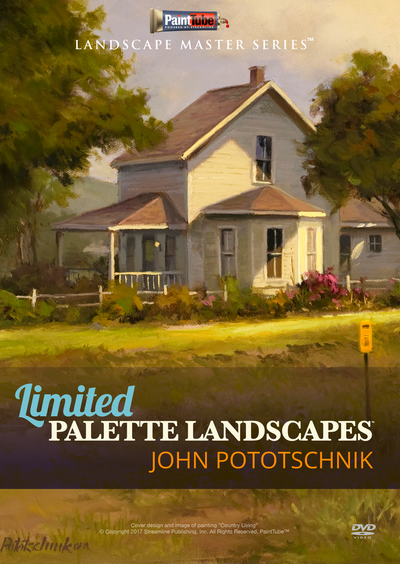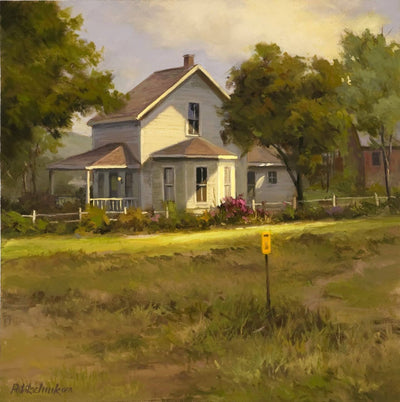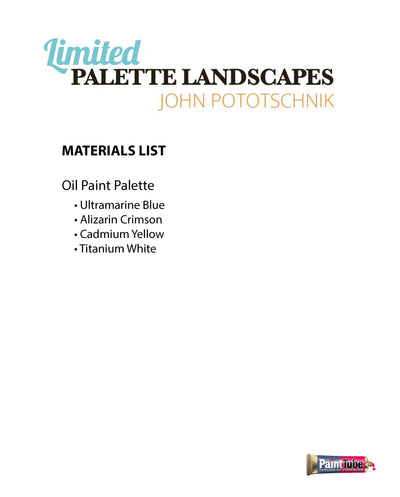Your Cart is Empty
FREE U.S. DOMESTIC SHIPPING • 100% MONEY-BACK GUARANTEE • Lifetime Access • No Subscription
FREE U.S. DOMESTIC SHIPPING • 100% MONEY-BACK GUARANTEE • Lifetime Access • No Subscription



$249.44 $197.97
You Save 20% ($51.47) 
Discover One Of The Most Powerful Techniques For Dramatically Improving Your Painting Skills Right Now
Sometimes the most simple painting techniques can unlock a world of possibility…
For example:
If you learn how to mix your colors the right way, you can create incredible “warm” and “cool” tones that tug at your viewer’s heartstrings.
The right color harmony can make a painting vibrate and create a deep emotional connection with your viewer.
In fact, working with and mixing your paint colors is one of the most important skills you need to have as a painter … and yet so many people unknowingly get it wrong.
This is one of the most common reasons painters get frustrated. The painting isn’t coming together, and they cannot figure out why — when all along, it may be lacking color harmony.
If you make the wrong color choices:
…and all of this creates disharmony in your work and makes makes things appear “off” to the viewer.
And if that wasn’t enough, it’s also overwhelming to sit down and look at all those different tubes of paint and ask yourself, “Where do I start?”
After all, you may think that more tubes of color are helping your painting, but it could be that it’s impossible to find harmony with too many colors.
Has this ever happened to you?
If so, the acclaimed landscape painter John Pototschnik has a surprising solution:
Limit your palette!
It may sound simple at first, but this is the key to building a strong foundation for creating impressive paintings — no matter what your style or genre is.
Here’s how it works:
Start out with three primary colors only: alizarin crimson, ultramarine blue, and cadmium yellow pale…
… then you mix your additional colors the correct way by using different combinations of these primary colors.
You see, if you spend just a little time creating a color wheel with different shades mixed from these colors, you can refer to it over and over and always “find your way” to the right color for anything in your work.
All of the shades in your painting will create a sense of harmony because they’re derived from the same primary colors.
So if you take the time to learn the fundamentals of working with a limited palette, you can mix and paint with colors in a much more masterful way.
In fact, it’s no exaggeration to say that this is one of the most exciting discoveries you can make as a painter.
But this is not something you can easily learn from a book.
You really need someone to take you by the hand and show you how it works up close … and for that, there really is no better teacher than John Pototschnik, because:
He’s The Master Artist Who Has Helped Countless Students Take Their Painting Experience To The Next Level
It’s true, and here’s why:
John has been painting professionally since 1982, and over the course of his 35-year career as a fine artist, he’s received an impressive number of regional and national awards, including four George Washington Honor Medals and the John Steven Jones Fellowship.
John’s work can be found in several private and public collections all over the U.S., and he’s been featured in seven different art books and a wide variety of prestigious art magazines, including: The Artist’s Magazine, Southwest Art, American Artist, PleinAir, American Art Collector, and more.
His influences include many of the French masters from the Barbizon School, including:
John is well known for his beautiful naturalist style, often depicting pastoral settings of subjects ranging from stoic farm scenes in the Southwest United States to regal villas in the Italian countryside.
John is a true master when it comes to working with value to establish mood and draw the viewer in — in fact, this is one of the key details that sets his work apart from that of other landscape painters.
In his own words:
“I am interested in depicting the truth about life, as I see it, in a naturalistic way free of frills and bravado…
…I enjoy depicting simple, common, everyday life and its objects as things of beauty and worth.”
John is a highly technical master painter, and that’s why we asked him to come to our studio and record a brand-new, step-by-step instructional DVD, titled:
Limited Palette Landscapes
John Pototschnik will guide you through every step of his painting process from A to Z…
…beginning with the very first stages of selecting your subject, all the way to making the final adjustments that speak to your viewer on an emotional level.
You see, anyone can try painting with these basic colors, but without understanding the method to color harmony, you may miss the boat.
But this video isn’t just about color. It’s learning how this master painter starts and finishes a painting.
You’ll also discover: